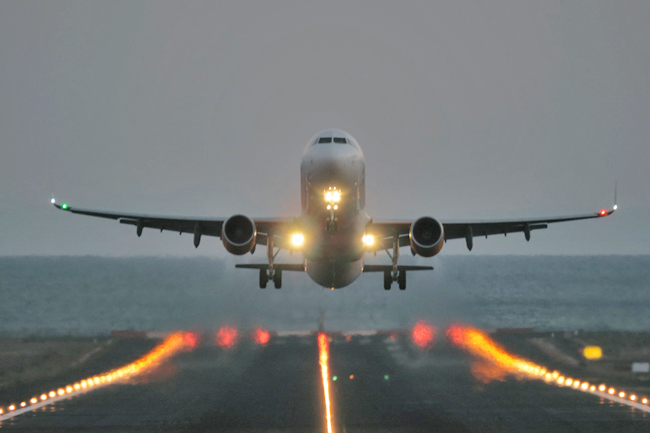ANN/THE STAR – We recently organised a 22-day tour across North America, stopping in places like Yellowknife, Canada, and New York, United States (US) – locations 13 to 15 hours behind Malaysia.
By the third day back in the Southern Hemisphere, jet lag hit hard. I felt light-headed even in broad daylight, struggled to control my body’s rhythm, and had nearly lost my appetite. But the nights were the worst. Despite every mental and physical effort to fall asleep, rest remained elusive.
I spent the night tossing, turning, and constantly shifting positions. I tried calming sleep music and even counted endless sheep, but nothing worked.
The entire night was spent laying in the bed and getting up to go to the toilet, and even to the kitchen for something to drink.
The only thing I didn’t do was swallow a sleeping pill or supplement like Melatonin.
Worse still, my heartbeat started to pick up pace after having not slept for over 48 hours.
Overwhelmed by extreme fatigue, my body began to present some unusual conditions and my skin started to itch and feel numb. However, having completely consumed my “physiological battery”, my resistance began to give way. That was when I “passed out” from complete exhaustion.



When I woke up the following morning, I was still not in tip-top condition mentally, and I was not over the dreadful jet lag yet. Such physiological signals and sleeplessness could go on for around seven to 10 days for some people. Now that’s what I call a “natural tormenting disaster”!
A friend teased me about my situation. “You have broken the regular rules of the Earth, and this is what you deserve!” he said. I mumbled, “That’s the only planet we have. Why can’t we just simply divide it into two time belts: day and night?”
Today, 193 countries on this planet are divided into 24 different time zones, with the biggest time difference being 22 hours.
Did you know that the Siberian railway in Russia straddles an enormous length of 9,288 kilometres (km) in total? If you set off from Vladivostok in the Far East, you will have to cross seven different time zones before arriving in Moscow.
This is enough to make even the Russians insanely confused… let alone foreign tourists.
Meanwhile, people in countries and continents with vast land masses such as the US, Canada, South America, and Europe will invariably have to lead their daily lives according to the different time zones they are physically in.
China is, no doubt, the best. Despite its massive 5,200km east-west breadth, which should divide the country into five different time zones, there is only one standard time zone and it is based on the time in Beijing (GMT+8), making life easier for every one living in China.
However, when you travel to Xinjiang, you may notice that only government departments, schools, bank, and commerce will adopt the Beijing time zone, while the native Uighurs continue to depend on the local Xinjiang time, which is two hours behind the national time (GMT+6).
As for Malaysia, the peninsular had in 1982 fast-forwarded its clock by 30 minutes to synchronise with Sabah and Sarawak. Back then Singapore also followed the GMT+8 time, and from then on, we have been lying in the same time zone as China.
Under such circumstances, I really wonder how the pilots and flight attendants on long-haul flights overcome jet lag.
I asked my friend, Captain Yao, and the “standard” answer I received from him was this:
“This is our profession, and during our training we were given some professional guidance on this. After some time, we just got used to it and learned to overcome jet lag.”
He continued, “The aircraft is getting more and more advanced. For example, the Boeing 787 and Airbus 350 have much lower noise level and more comfortable cabin humidity to prevent dehydration.
This makes breathing smoother and helps one to sleep in order to minimise the symptoms of jet lag.”
I then turned to ask a flight attendant how she managed to overcome it. She replied, “There are ‘beds’ inside the cabin for flight attendants to take turns to sleep for one to three hours during long-haul flights. The nap helps mitigate the discomfort from jet lag.
This is required under civil aviation regulations, and it does help a lot.”
It sounds “simple”, but in the end, I guess it’s still a person’s strong adaptability that matters. More importantly, you will need to take the torment of jet lag before you get to savour the sweetness of flying across the globe.
William, who always flies long distances, has his own ways of tackling jet lag. He makes it a habit to adequately prepare himself before a long-haul flight and will arrange his daily routines and onboard the aircraft based on the arrival time at his destination.
Jet lag is defined as extreme tiredness and other physical effects felt by a person after a long flight across different time zones.
In other words, jet lag disrupts the human biological clock, creating confusion in our sleep, dietary and other physiological activities, and hence physiological changes such as sleeplessness and reduced appetite. – Leesan




